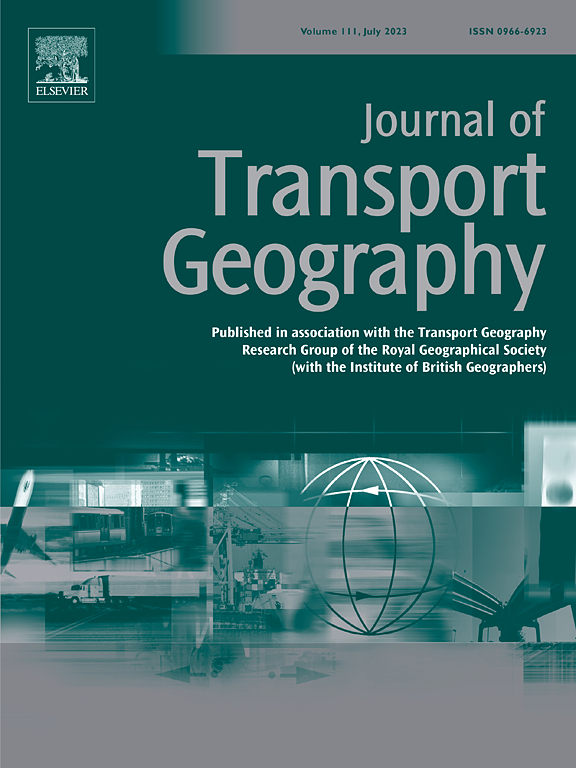估计农村公路系统的卡车交通模式:一种空间感知机器学习方法
IF 6.3
2区 工程技术
Q1 ECONOMICS
引用次数: 0
摘要
系统或网络范围内的卡车交通统计对于运输规划、基础设施设计和运输网络管理至关重要。然而,生成这些统计数据比生成总流量更具挑战性。目前的方法很大程度上依赖于工程判断,这使得它们是劳动密集型的,容易受到人为错误的影响,并且在不同的司法管辖区不一致。本研究旨在通过提出一种机器学习(ML)解决方案来解决这些挑战,该解决方案利用随机森林空间分类算法,将短时计数站(scs)自动分配给时间卡车交通模式组(ttpg),并将其归属于缺乏体积数据的路段。该研究进一步侧重于确定影响卡车交通模式的关键因素,并创建解决数据限制的模型。该方法使用马尼托巴省2019年交通监控计划的数据进行了测试,准确率超过80%,显示出其更广泛使用的潜力。提出的机器学习方法为分析卡车交通模式提供了一种自动化、可靠、准确和可转移的方法,减少了处理时间和对主观专业知识的依赖。本文章由计算机程序翻译,如有差异,请以英文原文为准。
Estimating temporal truck traffic patterns on rural highway systems: A spatially-aware machine learning approach
System- or network-wide truck traffic statistics are crucial for transportation planning, infrastructure design, and managing transport networks. However, producing these statistics is more challenging than for total traffic. Current methods depend largely on engineering judgment, making them labor-intensive, susceptible to human error, and inconsistent across jurisdictions. This study aims to address these challenges by proposing a machine learning (ML) solution, utilizing Random Forest spatial classification algorithm, to automate the assignment of short-duration count stations (SCSs) to temporal truck traffic pattern groups (TTPGs) and their attribution to road segments lacking volume data. The study further focuses on identifying the key factors that influence truck traffic patterns and creating models that address data limitations. The methodology was tested using data from Manitoba's 2019 traffic monitoring program, achieving an accuracy rate of over 80 %, showcasing its potential for broader use. The proposed ML approach offers an automated, reliable, accurate, and transferable method for analyzing truck traffic patterns, reducing processing time and reliance on subjective expertise.
求助全文
通过发布文献求助,成功后即可免费获取论文全文。
去求助
来源期刊

Journal of Transport Geography
Multiple-
CiteScore
11.50
自引率
11.50%
发文量
197
期刊介绍:
A major resurgence has occurred in transport geography in the wake of political and policy changes, huge transport infrastructure projects and responses to urban traffic congestion. The Journal of Transport Geography provides a central focus for developments in this rapidly expanding sub-discipline.
 求助内容:
求助内容: 应助结果提醒方式:
应助结果提醒方式:


